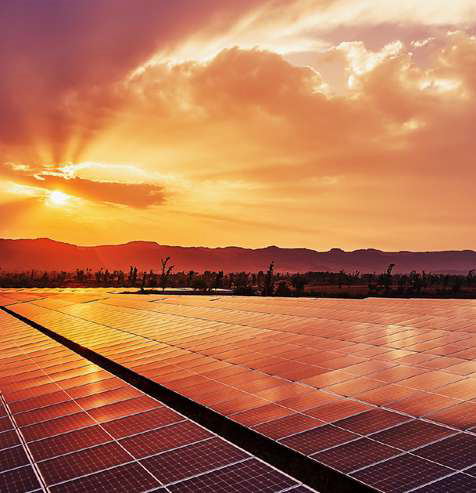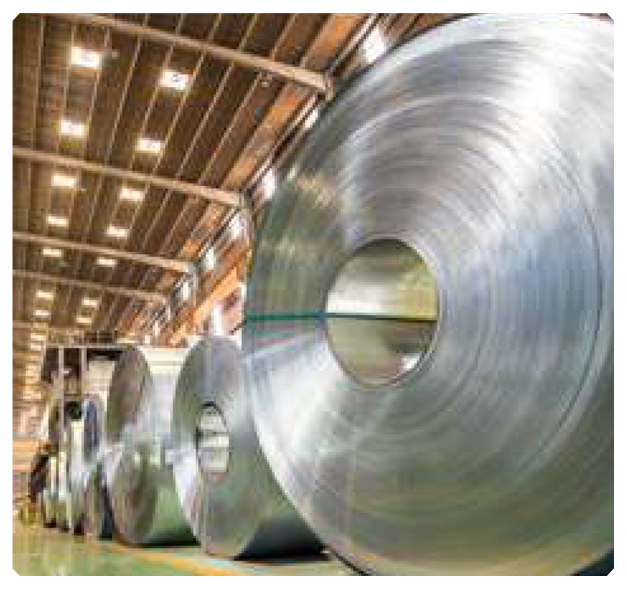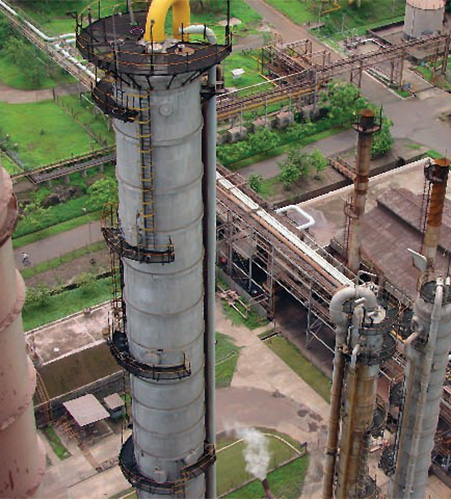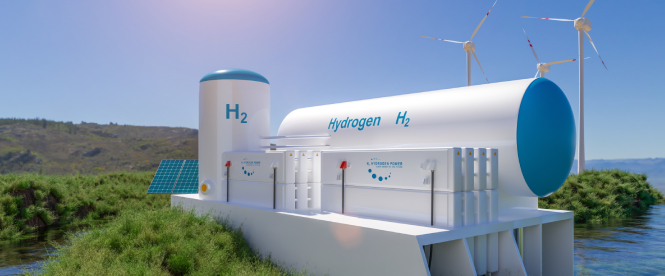Steel is essential to every aspect of our life. Steel is also one of the most sustainable materials and essential for climate change adaptation. However, steelmaking is a hard to abate process, contributing to emissions aggravating climate change. The global steel industry is adapting to the changing realities with technology-led innovation and participating to mitigate climate change.

According to worldsteel,
steel demand is projected
to rise to 1,840.2 MT in
2022, an increase of 0.4%
from 2021.
In 2023, steel demand to
see further growth of 2.2%
to reach 1,881.4 MT.
According to JPC, crude steel
production in India
Stood at

In FY 2021-22
Increased by

According to worldsteel, every tonne of steel produced in 2020 was responsible for emitting an average of 1.89 tonnes of carbon dioxide which equated to about 7-9% of global CO2 emissions.

Factors driving decarbonisation in steel
01
Growing demand for carbon-friendly steel products
02
Tightening of carbon emission regulations
03
Growing investor and public interest in sustainability
Decarbonising steel
Steel producers need to evaluate and decide on technologically-advanced solutions, which are also economically viable to decrease their carbon footprint in the long run. On the path to discovering and using new technologies, improving process efficiency and maximising the use of scrap also plays an equally significant role in CO2 emission reduction. A combination of factors is pushing the global steel industry to adopt clean processes. Though BF-BOF technology will remain in prominence in Asia, low carbon and clean technologies are also gaining pace and are being adopted for future business expansions.
IPCC, 6th Assessment Report

worldsteel’s Step Up programme
In 2019, the worldsteel initiated an industrywide programme named as Step Up. It is a multistep process which covers raw materials, energy input, yield and maintenance to support improvements in the steel industry. It supports the steel industry’s transition towards a low carbon economy. JSW Steel is running Step Up at its Vijayanagar facility and has planned to deploy it at Salem facility in the next FY.
Raw material selection
The quality of coking coal has a direct impact on emissions and energy intensity. Beneficiating ore and coal at its very source, switching to carbon-lean and hydrogen fuel or increasing the use of scraps can improve the operational performance of a plant significantly.
Energy efficiency
Energy efficiency is a significant component to resource efficiency. Measures including heat or energy recovery from solid gas streams, electricity savings, coke dry quenching, among others, can be used.
Improving yield
Improving yield basically leads to increased output from the steelmaking process with efficient use of resources. It is directly linked with how we are selecting raw materials and reducing energy intensity.
Process reliability
Ensuring proper maintenance of steelmaking plants leads to process reliability. This ultimately reduces losses in quality and time, thereby lowering energy use per tonne of steel.

BAT - Best Available Technologies
BF - Blast Furnace
CAG - Climate Action Group
CCUS - Carbon Capture, Utilisation and Storage
CCU - Carbon Capture and Utilisation
PCI - Pulverised Coal Injection
NG - Natural Gas
TCFD - Task Force on Climate related Financial Disclosures
Roadmap for JSW Steel
transition to a low-carbon future
2030
Emissions reduction
Other enablers
2030 to
2050
Deep decarbonisation
2050 to
2070
Offsetting and other interventions
Carbon capture, utilisation and storage
Over the past years, discussions around CO2 capture technologies have been revolutionising the industrial market through tremendous technological innovations. Presently at the development stage, many steel companies are set to imbibe the CCUS technology into their operations and have been committing to decarbonisations. Steel plants are ideal for carbon capture methodology as most of their emissions can be captured from their process-gas and off-gas. This captured carbon can be repurposed. This enables producers to keep their costs low while making substantial progress towards decarbonisation. This technology is set to transform the functioning of the steel industry. CCU/CCUS will play an important role in enabling a circular carbon economy.
CCU at JSW Steel
Carbon capture
Implemented carbon capture and utilisation (CCU) technology at JSW Salav Works
Key benefits
The CCU process
JSW Steel Salav DRI

CO & H2 are passed through iron ore pellets and lump ore to facilitate the reduction process

Waste gas recovery
Carbon-rich waste gas is recovered and sent to the absorber which treats it counter current with g.v. solution forming rich solution

HP & LP regenerators
Rich solution is treated in the regenerators separating G.V. solution and Carbon Dioxide which is then passed on for further processing

Carbon capture and storage
CO2 is then captured, stored and transported for its usage in the food & beverages industry
Purity of CO2

Production capacity

Hydrogen as a sustainable energy source

Hydrogen is getting a lot of attention as a solution to decarbonise the steel industry. Being a viable and comparatively climate-friendly alternative, shifting to a hydrogen-based economy will accelerate our transition to a low-carbon future. Hydrogen as a solution can be used in steel production in mostly two ways:
At JSW Steel, we are front-ending the call for India’s hydrogen economy, by being a member of the India H2 Alliance and scoping to pilot hydrogen-based project at Vijayanagar Works.
Sources: